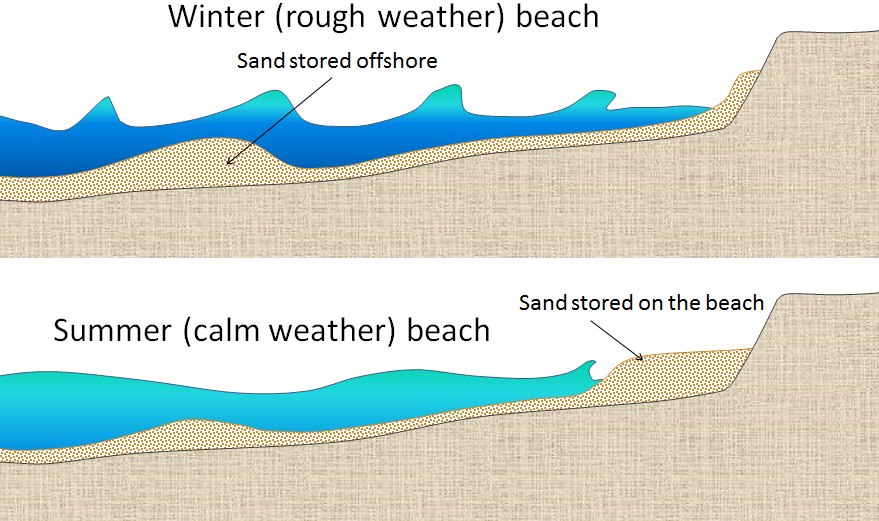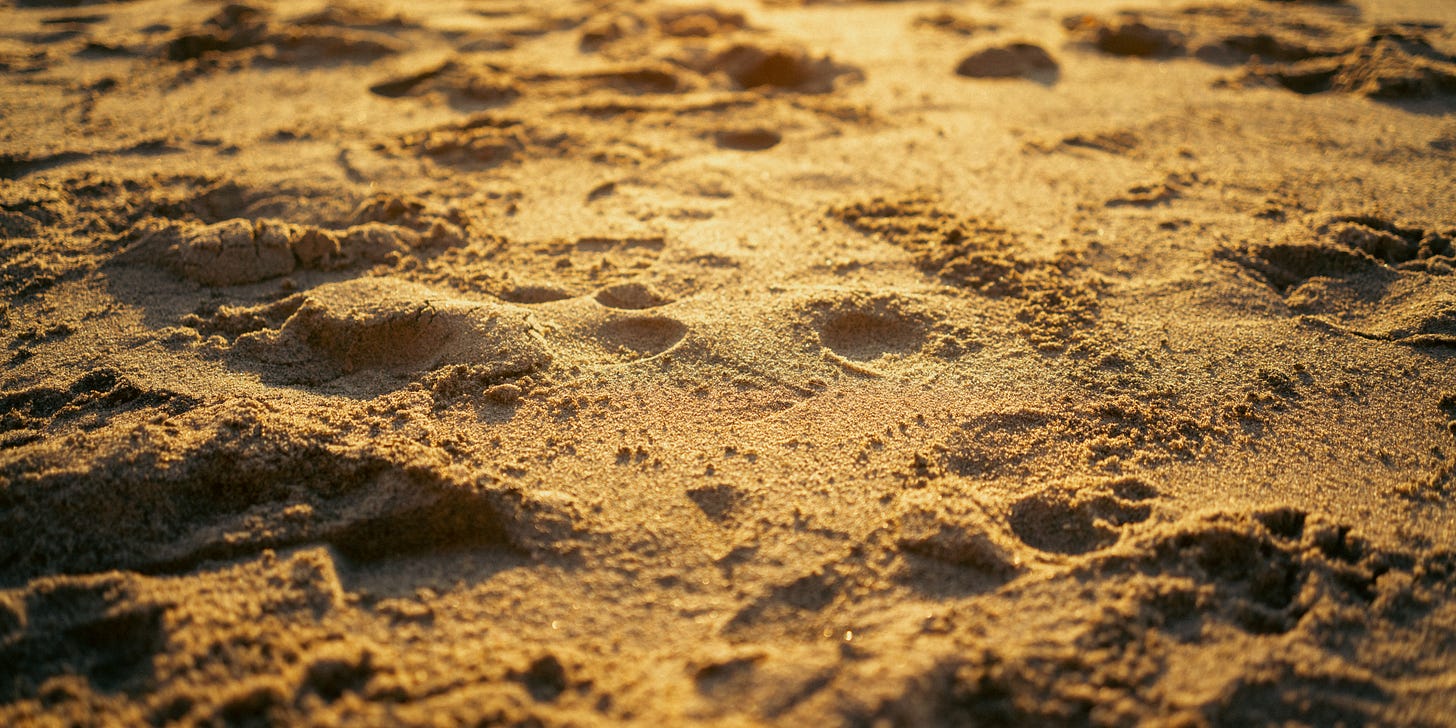Why is sand eroded by big swells?
It's January and the sandy bottom you knew by heart has vanished, replaced by cobblestones and reefs that weren't there last week. Meanwhile, the shore break next door is now firing over a freshly deposited sandbar. The ocean did a little switcheroo on you.
Sand movement begins when water flowing over the bottom creates enough friction to overcome the grain's resistance to motion. For sand grains, this threshold depends on grain size, density, and the speed of water moving over them. These factors determine the shear stress - the lifting force that flowing water exerts on the seafloor.
When waves break, they create powerful currents that drag along the bottom. Larger waves generate stronger currents, which create higher shear stress. Once this stress exceeds the critical shear stress for a particular grain size, the sand gets picked up and transport begins. Fine sand requires less force to move than coarse sand, which is why you'll often see the beach composition change during different wave conditions. It gets picked off the bottom first, leaving the coarser sediment to fend for itself.

During big swells, powerful wave-driven currents also carry sand offshore into deeper water where wave energy can't reach it anymore. This creates an "erosive" beach profile, where sand gets stripped from the nearshore zone and deposited in deeper water beyond the surf zone. Simultaneously, the massive volume of water that breaking waves push toward shore has to return to the ocean somehow. This return flow, whether through rip currents or undertow, also carries suspended sand seaward. The bigger the waves, the more water gets pushed shoreward, and the stronger these return currents become.
Most of this sand transport actually happens parallel to the shoreline through alongshore currents. When waves approach the beach at an angle, they generate currents that flow sideways along the coast - and these currents are typically much stronger than the cross-shore flows we notice as surfers. This alongshore transport can move massive amounts of sediment, sometimes carrying sand from one beach system to deposit it miles down the coast. Once the sand is lifted into the water column, the combined effects of tidal, internal wave-driven, wind-driven, and low-frequency currents direct the sand elsewhere.
When wave energy drops, the shear stress on the seafloor decreases dramatically. Sand that was easily mobilized during the big swell now stays put, while previously suspended particles begin settling out of the water column. These gentler waves can still transport sand, but they tend to move it shoreward rather than offshore. Over weeks or months of smaller surf, beaches gradually rebuild their sand supply as currents slowly push sediment back from those offshore deposits. This process is called “accretion,” in contrast to the “erosion” that big waves cause.
This cycle defines many California beaches. Winter storms generate massive swells that strip sand offshore, creating steep, narrow beaches backed by cobble and exposed bedrock. Summer's smaller, longer-period swells and reduced wave energy allow sand to migrate back onshore, rebuilding those wide, sandy beaches you see on postcards.

The grain size of local sand plays a crucial role in how quickly these changes occur. Beaches composed of fine sand respond more dramatically to wave energy changes because smaller grains require less shear stress to mobilize. Coarse sand beaches change more slowly but can handle larger waves before losing their sand offshore.
For the beach-breakers among us, these sediment transport processes hit closer to home than those chasing reef breaks or rocky points. While reef breaks maintain their basic structure regardless of sand movement, beach breaks live and die by these shifting bottoms. The little corner you loved last week might be gone for the season, but that’s all the more reason to go check no-name spots along the coast rather than rely on cams to do it for you.
Further Reading:


I semi-assumed the sand in Carlsbad/Oceanside was brought in from elsewhere for the tourist season. I figured the cobblestones were the “natural” beach, with the sand being dumped and spread around by the municipalities. Is there *some* of this happening also, or is the sand-to-cobblestone cycle up there 100% natural?